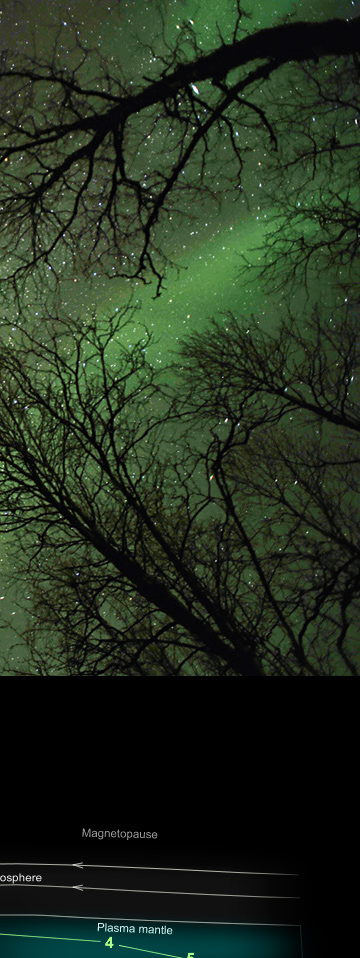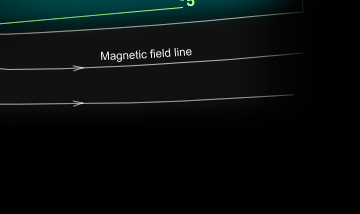(1) Protons and other particles arrive from the sun. On their own they have too low an energy to produce any significant aurora.
(2) When the solar magnetic field direction is favourable and of sufficient strength it connects with that of Earth. The solar particles leak into our magnetic domain.
(3) Further magnetic field rearrangements sweep them back towards Earth's dark side.
(4) They are stored in the plasma mantle.
(5) Magnetic field reconnections send some particles spiraling down magnetic field lines towards Earth. Others are ejected in the opposite direction.
(6) They are accelerated. The particles - now with high energies arrive at Earth.
(7) They penetrate the upper atmosphere and collisionally excite atoms and molecules. Some excited atoms decay by emitting light - the aurora.
Fredrik Brom's green auroral light is from the decay of excited oxygen atoms ( O 1S to 1D ) above 100 km.
|








